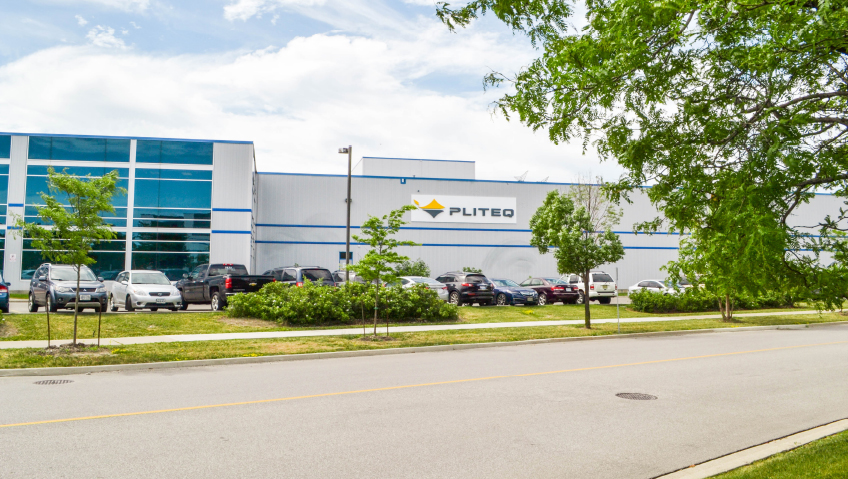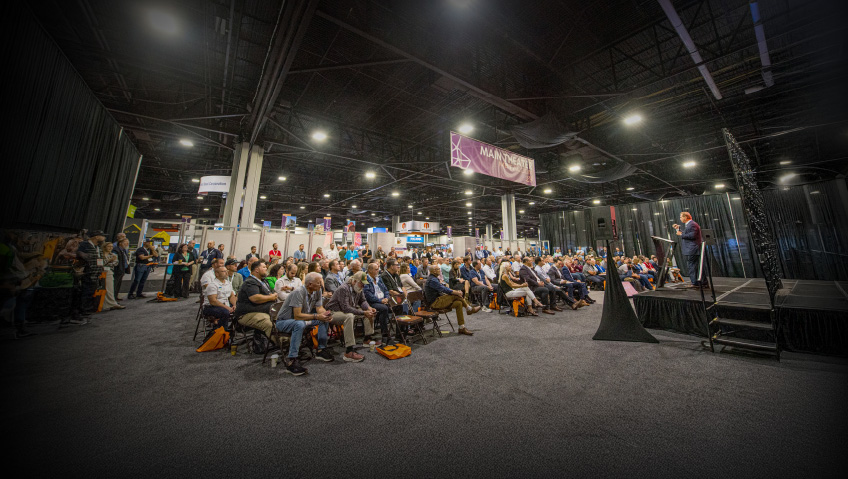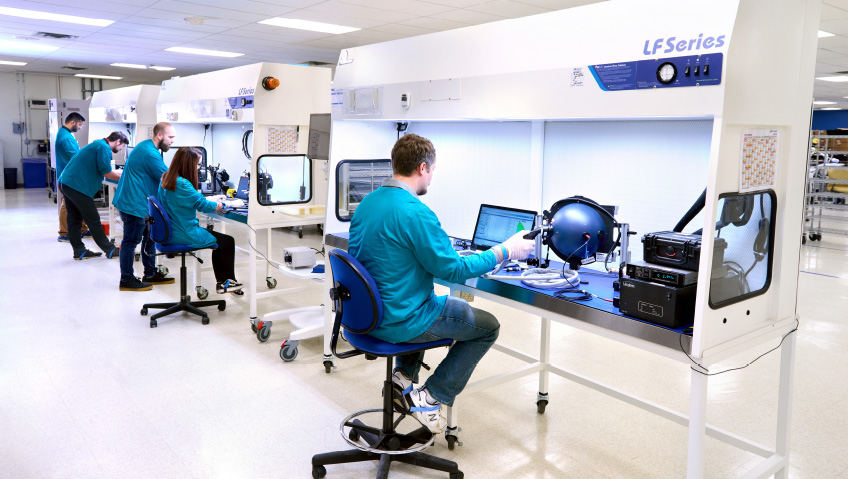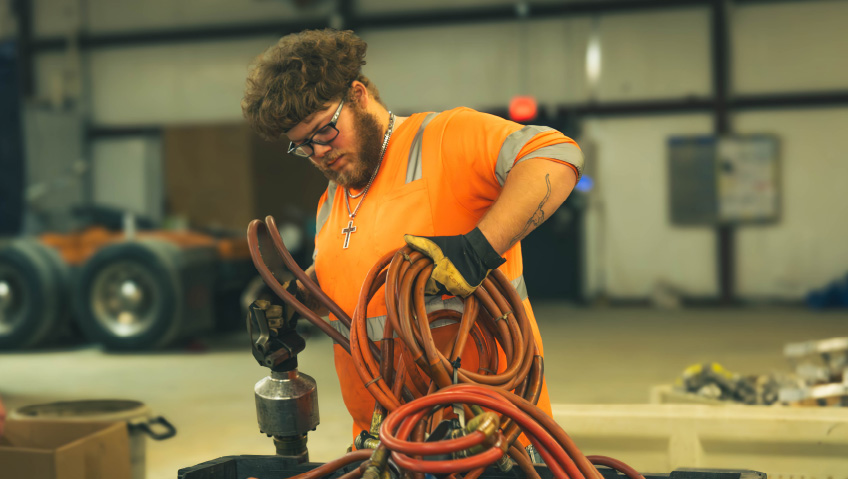Firefighters had never seen anything like the inferno on February 12, 1990. Most blazes could be extinguished with water alone, but not 14 million scrap tires stacked 23 feet (seven meters) high.
In Hagersville, Ontario, the owner of Tyre King had fought a provincial order to dispose of the tires since 1987. Following a 1989 appeal, the Environmental Appeal Board noted that the dump—the size of 18 football fields—had “the potential for a very serious disaster.”
That was almost an understatement. 17 days on, when front-end loaders were used to break down piles of tires, the Hagersville Tire Fire was news around the globe. It cost an estimated $13 million.
The Hagersville fire did some good. It opened up the subject of what to do with a huge source of environmental degradation and paved the way for new technologies to flourish.
And it caught the attention of a thoughtful young man named Paul Downey, inspiring him to choose tire recycling as his University of Western Ontario engineering thesis topic. “It was a problem that definitely needed a solution,” he says, noting that very few people were working on the issue at the time.
Back in the day, one of the very few companies doing something about tire recycling was National Rubber. Downey sent his thesis to them and was hired in 1991 to help design and build the world’s largest scrap tire recycling plant.
There was still a problem, though, namely that the process of recycling rubber used harmful chemicals. Knowing there had to be better, more environmentally friendly methods, Downey founded Pliteq® in 2006, and the company is now behind a range of cleverly engineered products for buildings, including flooring and sound control underlayment derived from the materials recovered from scrap tires.
One of the world’s leading manufacturers of products created from waste material, Pliteq successfully diverts tires that would end up in landfills. Trusted by contractors, architects, engineers, and acoustic experts, Pliteq’s innovative products are third-party tested and known internationally for their superior engineering qualities.
Although we may think of tires as being made from nothing more than rubber, they are composed of many other materials, including oil, silica, sulphur, polyester, rayon, and steel.
Much of Pliteq’s ground-up rubber comes to the company from suppliers in 2,000 pound (907 kg) ‘super sacks’—about 20 to 26 per truckload. Steel, fabric, and ferrous and nonferrous materials like glass and stone are screened and removed to ensure a clean rubber material.
Since quality from different suppliers can vary, Pliteq is now getting into processing. “It’s a matter of having good suppliers and making sure we can use the product in our downstream processes,” says Downey. “We’re making very high-quality finished products like flooring and underlay, so we need to control the quality of the raw material.”
Once materials have been screened and distilled, they are mixed, using a carefully guarded formula, with particles of various sizes and a binder and then pressed into a 10,000-pound (4,535 kg) log. After sitting in a mould for eight to 24 hours, the massive cylinder is removed and put through a process called peeling, much like an apple.
“We can veneer it into any thickness between one and 50 millimetres (0.04 and 2 inches) in thickness; basically, you’re taking a solid log, and turning it into a sheet or roll,” says Downey.
Using a combination of machinery from the plywood industry—where trees are cut, bark stripped, and then spun against a band knife—and its own technology, products are made using a polyurethane binder invented by Bayer, the company that created Aspirin decades ago.
“The great thing about rubber is that it’s different from plastic in that it’s permanently recyclable,” comments Downey. “It doesn’t degrade in the recycling process. Every product we make we can take back, grind up, and reuse.”
As for materials, there’s no shortage of tires. It’s estimated that, in developed countries, one tire is discarded per person per year—2.5 billion tires a year. Pliteq is Canada’s largest recycler at almost seven million tires per year; impressive, yes, but modest compared to 2.5 billion.
The son of a hard-working bricklayer in Sudbury, Ontario, and one of eight children, Downey remembers his venture’s early days. To make money to fulfill his dream, he created patents and licensed them. “I didn’t have the money to build a factory, so I licensed the patents to build Pliteq and build the factory, invent more stuff, and commercialize more products,” he says. “That’s how it worked.”
Today, Pliteq has 300 employees, an engineering office in north Toronto, and a 200,000-square-foot factory in Woodbridge, Ontario. The company also has offices throughout Canada and the United States, Mexico City, London, Dubai, Singapore and Melbourne.
Since similar products did not exist before Pliteq, Downey created the market with items like GenieMat RST, the GenieMat D-Series (sound control underlayment), GenieMat FIT (fitness flooring), GenieMat TMIP, GenieMat WSI, GenieMat GBV, and GenieMat Rail for the control of ground-borne vibration. Pliteq is not only behind these and other innovative products, but smarter, safer manufacturing methods and carbon capture.
“There are multiple ways to manufacture goods or products from recycled tires. Most of them involve a process called vulcanization, which uses chemicals, which we don’t do,” Downey says. Unlike other techniques, Pliteq makes products at room temperature using water.
“That’s the magic of that material. We are not doing anything—heating it or putting other chemicals in—so there’s nothing to off-gas. It doesn’t smell or break down.” One example he cites is gymnasium flooring made by other companies, which emits a powerful odour. With Pliteq’s manufacturing methods, the flooring turns out odourless.
Pliteq’s products also aid in carbon capture and embodiment, and help to tackle one of the biggest issues facing builders today—namely, how do you minimize sound transmission in buildings?
Traditionally, concrete is used to control acoustics issues, which brings its own problems. One of the most polluting materials, it is estimated that four to eight percent of the planet’s carbon emissions are due to concrete. It creates pollution during its manufacture, is heavy, requires massive truck transport, and is labour-intensive. Pliteq’s products are much lighter, easier to use, recyclable, and eliminate mass from buildings while still solving their acoustics problems.
In the future, as buildings become much taller and more densely populated, Pliteq will play an even more important role. Although cities worldwide believe building vertically is one way to address housing issues, it raises other potential problems, like hearing your neighbours’ footsteps, music, and parties. One’s quality of life is dependent on a feeling of security, peace, and privacy and Pliteq ensures people can enjoy these aspects even when living in close quarters.
“There’s no current building code requirement for impact sound in Canada, which is really unfortunate,” says Downey. “Every other jurisdiction in the world has one, and then Canada doesn’t. But there are quite a few developers in Toronto who use our products. Even though they don’t have to, they know they should, because people are more aware of sound becoming a problem. You don’t want to buy a million-dollar condo and then can’t sleep at night.”
Pliteq’s products are found in construction projects worldwide. One of the best-known is Dubai’s Burj Khalifa. At a height of 2,722 feet (829.8 m), the skyscraper is the world’s tallest structure. The company’s products were specified for sound control in the building and its gymnasium.
It is Pliteq’s desire to help other regions globally do a better job recycling their tires, and the company is looking for opportunities with government and industry to manufacture in new international regions.
Much of the company’s business comes from meeting builders, developers, and architects in person and to date, Pliteq’s products are used in about 30,000 buildings around the world. The reasons, says Downey, include quality and comfort. Builders know Pliteq’s products, their ease of installation, and the company’s reputation for quality. Often, it is much easier and more comfortable to work with tested products you already know and trust.
Although training videos are available in multiple languages and the company can provide a fly-out technical service team on-site if necessary, Pliteq’s products are straightforward. “Generally, with a lot of our products, you kick a roll and it rolls out to the end and lies flat. So the installation can be quite easy,” Downey says.
He and his team are constantly developing new markets and introducing new products to address a breadth of issues. “Our vision is to be in or around every building that’s under construction in the world,” says Downey of the company that was inspired by a devastating tire fire over 30 years ago.
“That’s how we thought of using our products to solve problems in building construction, because we knew rubber was very good for vibration, sound control, and flooring,” he says. “We were a smallish Canadian company, but recycling is a big global problem, and we’re the global leader in solving that.”






